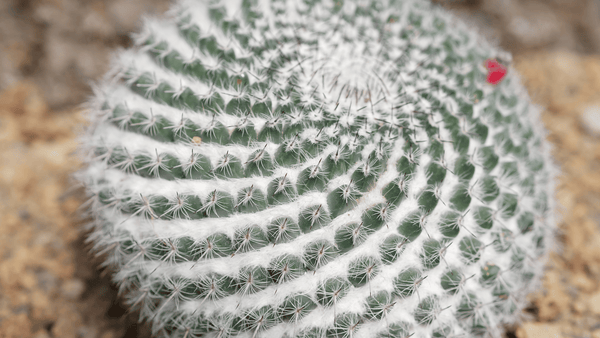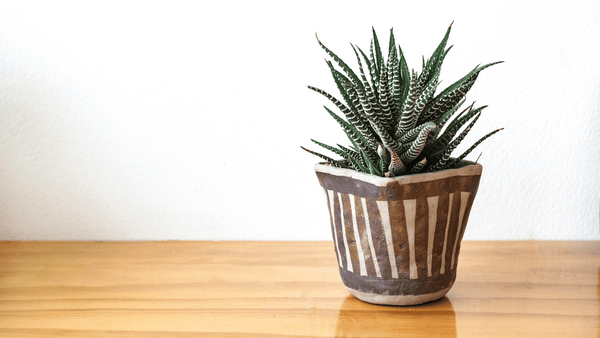
Thriving in Shadows: Cacti and Succulents for Low-Light Environments

Cacti and succulents are renowned for their resilience and ability to thrive in harsh, arid environments. However, not all these resilient plants require copious amounts of sunlight to flourish. In fact, there are several species that can adapt and thrive in low-light conditions, making them perfect additions to indoor spaces or shaded outdoor areas. In this article, we will explore the fascinating world of cacti and succulents that can sustain low-light conditions, shedding light on the diverse and adaptable nature of these unique plants.
Understanding Low-Light Environments
Before delving into specific cacti and succulents, it's essential to understand what constitutes a low-light environment. Typically, low-light conditions refer to areas where direct sunlight is limited or filtered through other objects. Indoor spaces with limited windows, shaded corners, or outdoor areas beneath trees are common examples of low-light environments. While most cacti and succulents thrive in bright, indirect sunlight, there are some varieties that have evolved to thrive in lower light conditions, making them suitable for various settings.
Adaptable Cacti for Low-Light Environments
Scarlett Ball Cactus (Parodia Haselbergii)

This cactus is a small ball cactus with numerous little spines. They often bloom red or yellow flowers along the crown. Parodia are easy-care plants and great for anyone new to caring for cacti. These cacti do not do well in a lot of direct sun. They can handle direct sunlight in the morning and later in the day but can be harmed by the direct sun during the hottest hours of the day. A low-lit environment is just fine for these little guys.
Crown Cactus (Rebutia)

The crown cactus is native to South America where they grow in clusters on mountains. While this cactus likes to receive some bright light, it can grow and live in a range of conditions, including indoors and with low light. This cactus needs very little water, even for a cactus. The soil should dry out entirely before you go to water it again. This cactus is another great one for cacti newbies because it is very resilient and adaptive. Poor lighting and irregular watering are not optimal but will not cause much harm to this cactus.
Zebra Cactus

The Zebra Cactus, also known as the Zebra Haworthia, is a striking cactus with distinctive zebra-like stripes on its leaves. Native to South Africa, this plant is well-suited for low-light conditions and can be grown indoors with minimal sunlight. Its ability to store water in its leaves allows it to withstand periods of drought, making it a hardy choice for those looking to add a touch of exotic beauty to their homes.
Christmas Cactus (Schlumbergera)

Contrary to its name, the Christmas Cactus is not limited to the holiday season. This succulent is native to the rainforests of Brazil and is adapted to lower light levels. With its segmented, trailing stems and vibrant, seasonal blooms, the Christmas Cactus is a delightful addition to shaded corners or indoor spaces with filtered light. It requires well-draining soil and periodic watering for optimal growth.
Epiphyllum

Also known as Orchid Cacti, Epiphyllums are epiphytic cacti that naturally grow on trees or rocks in their native habitats. These cacti have flattened stems and produce large, showy flowers. Epiphyllums can adapt to low-light conditions and are suitable for indoor cultivation. They prefer well-draining soil and benefit from indirect sunlight, making them a perfect choice for spaces with limited natural light.
Moon Cactus (Gymnocalycium mihanovichii)

The Moon Cactus is a colorful and unique option for low-light environments. This small, round cactus lacks chlorophyll, giving it a bright pink, orange, or yellow color. Because it doesn't rely heavily on sunlight for photosynthesis, it can thrive in low-light conditions. Moon Cacti are often grafted onto a rootstock cactus for stability and optimal growth.
Adaptations of Succulents to Low-Light Conditions
Aloe Vera

Widely known for its medicinal properties, Aloe Vera is a succulent that can adapt to low-light conditions. While it prefers bright, indirect sunlight, it can tolerate lower light levels and is suitable for indoor cultivation. Aloe Vera requires well-draining soil and infrequent watering, making it a resilient and versatile choice for those seeking succulents that thrive in various environments.
Jade Plant (Crassula ovata)

The Jade Plant, also known as the Money Plant or Lucky Plant, is a classic succulent that can adapt to low-light conditions. Its fleshy leaves and tree-like appearance make it a popular choice for indoor spaces. The Jade Plant is known for its resilience and ability to endure suboptimal growing conditions. It prefers well-draining soil and periodic watering, making it an excellent addition to low-light environments.
Gasteria

Gasteria is a genus of succulents that includes several species adapted to low-light conditions. These plants have thick, tongue-shaped leaves arranged in rosettes. Gasterias are well-suited for indoor cultivation and can thrive in shaded corners. They are known for their slow growth and tolerance to neglect, making them a low-maintenance option for succulent enthusiasts.
Haworthia

Haworthias are a diverse group of succulents known for their rosette-shaped leaves and unique markings. Many species within the Haworthia genus can adapt to low-light conditions, making them suitable for indoor settings. The Zebra Plant, mentioned earlier, is a type of Haworthia. These succulents require well-draining soil and periodic watering, and they can add a touch of elegance to spaces with limited sunlight.
String of Pearls (Senecio rowleyanus)

The String of Pearls is a distinctive succulent with trailing stems adorned with small, bead-like leaves. Native to South Africa, this succulent is adapted to lower light levels and can thrive in indirect sunlight. It is a popular choice for hanging baskets or cascading arrangements in indoor spaces. String of Pearls requires well-draining soil and moderate watering, making it an eye-catching addition to low-light environments.
Snake Plant (Sansevieria)

Also known as the Mother-in-law's Tongue, the Snake Plant is a popular choice for low-light environments. With its upright, sword-like leaves, this succulent is known for its air-purifying properties and low-maintenance care. The Snake Plant can tolerate low light, but it will also thrive in brighter conditions if available. Its adaptability makes it an excellent choice for homes or offices with limited natural light.
Caring for Cacti and Succulents in Low-Light Environments
While these cacti and succulents can adapt to low-light conditions, it's crucial to provide them with the right care to ensure their well-being. Here are some general tips for caring for cacti and succulents in environments with limited sunlight:
Well-Draining Soil
Use a well-draining soil mix specifically designed for cacti and succulents. This helps prevent waterlogged conditions that can lead to root rot.
Moderate Watering
While cacti and succulents are adapted to arid conditions, they still need water. Allow the soil to dry out between waterings, and be cautious not to overwater, especially in low-light environments where evaporation is slower.
Indirect Sunlight
Place the plants in areas with filtered or indirect sunlight. If growing indoors, choose locations near windows with sheer curtains or in spots that receive dappled sunlight throughout the day.
Rotate the Plants
If possible, rotate the cacti and succulents occasionally to ensure all parts receive some exposure to light. This helps prevent uneven growth and encourages a balanced appearance.
Monitor for Signs of Stress
Keep an eye on your plants for any signs of stress, such as stretched or etiolated growth. If the plants start to exhibit elongated stems, consider providing them with more light.
Conclusion
Cacti and succulents are incredibly diverse and adaptable plants, with many species capable of thriving in low-light conditions. Whether you're decorating an office with limited sunlight or looking to enhance the beauty of a shaded corner in your home, the cacti and succulents mentioned in this article offer unique and captivating options. By understanding the specific needs of these plants and providing them with proper care, you can enjoy the beauty of these resilient succulents even in areas with minimal sunlight. Embrace the versatility of these low-light champions and create an oasis of greenery in any space, no matter how shaded.
Cactus en Ligne Team
www.cactusenligne.ca ∙ bonjour@cactusenligne.ca